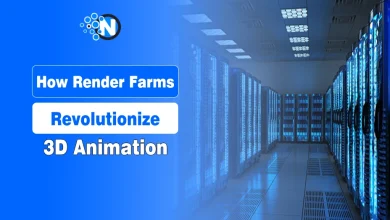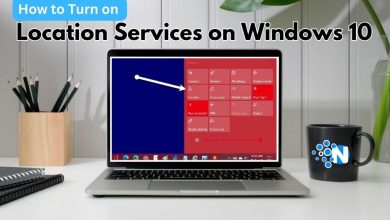Know How To React Native Architecture Works

React local is a pass-platform framework created by using FB in 2015 with the intention of being a one-size-fits-all solution for creating native-like apps that function on a couple of systems and have an unmarried codebase as their basis. The original design suited the developers’ requirements, but it also blanketed a number of defects and vulnerabilities that made the development technique hard.
React local gained traction and became one of the maximum popular technologies for constructing value-effective, scalable, and attractive programs way to strong community assist and the increasing recognition of React amongst internet builders. So that you can raise the framework’s market position, FB unveiled React local’s re-structure in 2018, which is supposed to make the generation greater resilient and fasten lengthy-standing problems that software program engineers have been complaining about for years.
React local was developed in 2013 as a way to bring together an internet-based totally technology called React with a proprietary stack of local platforms that became now and again disjointed and slow to iterate. Then, in 2015, they devised a plan to connect two threads with the usage of a Bridge, permitting the 2 facets to have interaction in a common style.
React native’s contemporary architecture is primarily based on three principal pillars:
The Thread for JavaScript. The complete JavaScript code is located and compiled in this area. The JavaScriptCore runs the bundle while the consumer launches the program whilst it’s miles packaged for production.
‘The local Thread,’ because it’s acknowledged. This is the place wherein local code is run. This component is at the rate of the person interface and ensures that the app communicates with the JS thread each time it wishes to replace the UI, run native features on click, and so forth.
Due to the fact, all native modules are loaded at startup, they may constantly be packaged if the person wants to utilize them.
The Thread of the Shadow. It’s miles the region in which your application’s format is calculated. With the guide of facebook’s very own layout engine, Yoga, this cross-platform framework executes this project. It converts, calculates, and transmits flexbox layouts to the app’s UI.

The present-day system’s foremost obstacles architecture for React local
If you’re looking for a fast method to build a scalable app that could function on numerous systems, React native is a brilliant choice. As a result, you can start with an MVP, attract the first customers, and enter the marketplace earlier than your competitors do. In the meantime, it’s far the primary technology for creating move-platform applications.
The React native structure, however, isn’t always ideal and must be progressed. In case you take a look at the React native format, you’ll observe that the framework communicates with native modules the use of a Bridge, which frequently results in a queue due to the fact the 2 sides are unaware of every other. This kind of process can also result in overall performance constraints which have a destructive effect on the consumer experience.
The crew releases normal updates to cope with these and different problems with the React local layout, with the intention of streamlining builders’ revel in. The most current major upgrade happened on July 6, 2020, whilst the FB crew added an overhauled LogBox, which rebuilt the complete error, warning, and log gadget. There could be extra of these enhancements in the future. So, in case you use React local on your tech stack, you could be confident that the framework will maintain progress and end up more native and developer-friendly.
Any other attempt to improve debugging changed into Flipper. It has some hand features that make it easier for builders to discover vulnerabilities and unexpectedly solve them. Further, the team has previously launched Hermes, a JavaScript engine specialized for Android app improvement. Its replacement resulted in a faster start-up, smaller program length, and stepped forward overall performance.
Re-structure for React native
This massive shift has been expected by the whole React native community. The new React local layout is projected to offer a slew of giant adjustments to the improvement technique, making it more efficient and handy for all of us worried.
The option of the use of Any JS Engine
The JavaScript thread will not be restricted to the JavaScriptCore, permitting any excessive-performance JS engine to be used.
The Bridge’s Depreciation
The Bridge will sooner or later be phased out as a part of the React local re-architecture and could be replaced with a brand new aspect referred to as the JavaScript Interface (JSI). This thing can even act as a catalyst for the development of a brand new fabric and TurboModules.
JSI
Another gain of JSI is the whole synchronization of JS threads and local modules. JS may be able to preserve references to warm items and invoke methods on them thanks to the JavaScriptInterface. It will even have a shared possession idea, to be able to permit the local aspect to attach without delay with the JS thread.
Local Modules are underneath your direct manipulate.
Some other benefit that the brand new React local offers the network is complete manipulate over native modules. In place of starting up them all of sudden, the program will handiest use them whilst they’re wished.
Material fabric is a UI supervisor re-structure that is meant to trade the rendering layer with the aid of eliminating the requirement for bridges. The brand new approach allows you to create the Shadow Tree immediately in C++, which accelerates the manner and reduces the variety of steps required to render a certain element.
CodeGen
The Facebook group is presently operating on a technology referred to as CodeGen to provide seamless communique between React local and local quantities. It’s miles predicted to automate the compatibility and synchronization of threads.
React native’s blessings
The framework presents a wide range of opportunities for growing person-pleasant apps thanks to its smooth React local layout. The following are a number of its primary advantages:
Reusability of Code
This is most probably one of the maximum essential advantages that React Naive provides to its network. Rather than developing particular apps for every platform, software program engineers reuse 90% of the code, saving both money and time.
Reloading in actual time and on the go
Those utilities have been added to make React native developers’ jobs simpler and the technique extra agile. Whilst many changes to the code are completed, live reloading helps to refresh the entire app. In case you had to add some hyperlinks to the foundation, as an example, stay reloading will reload the program and begin it with the brand new changes.




